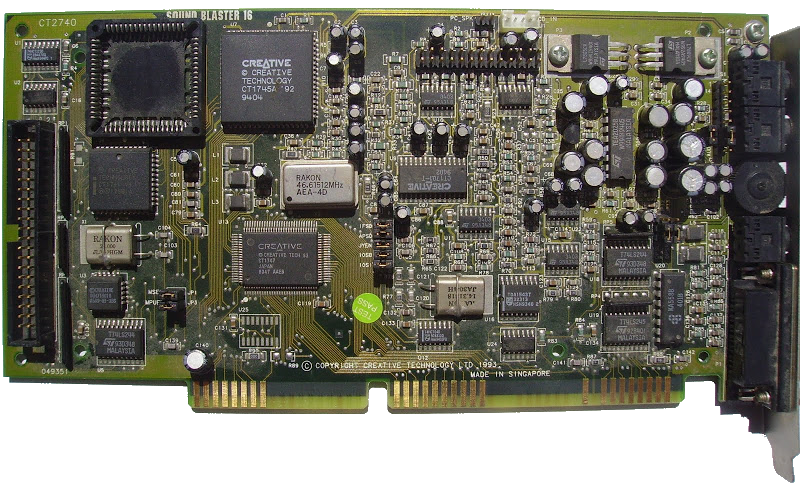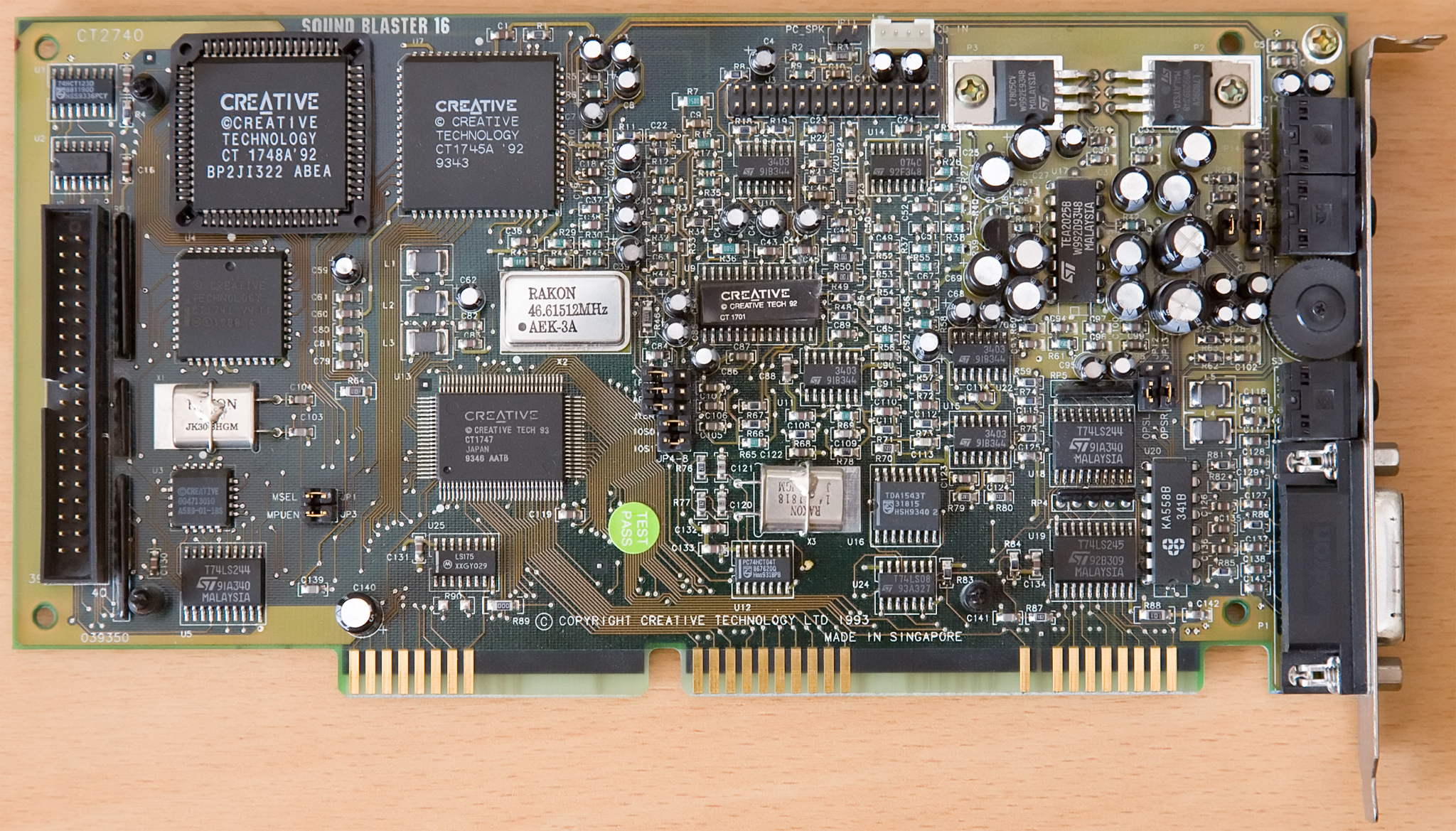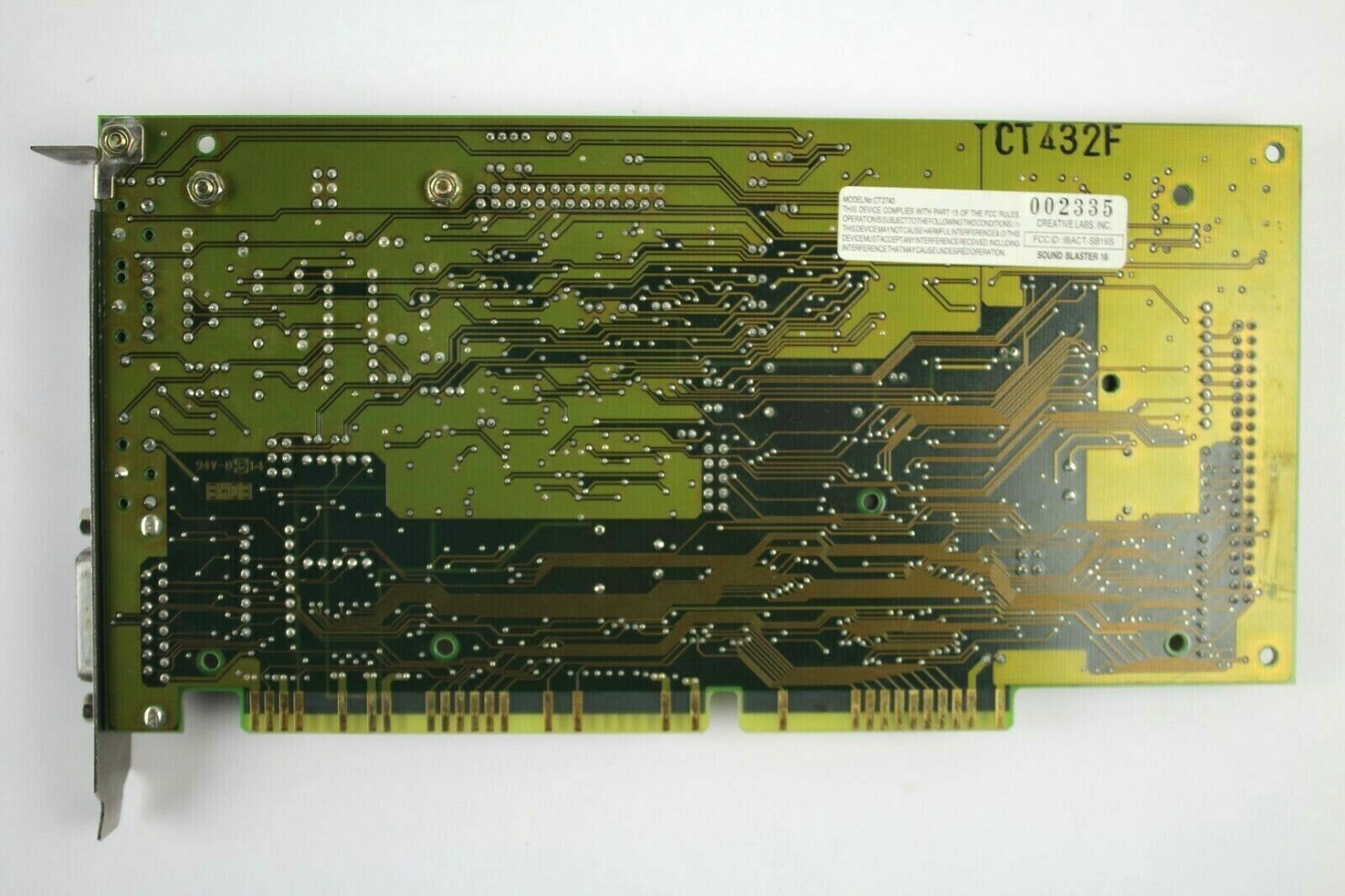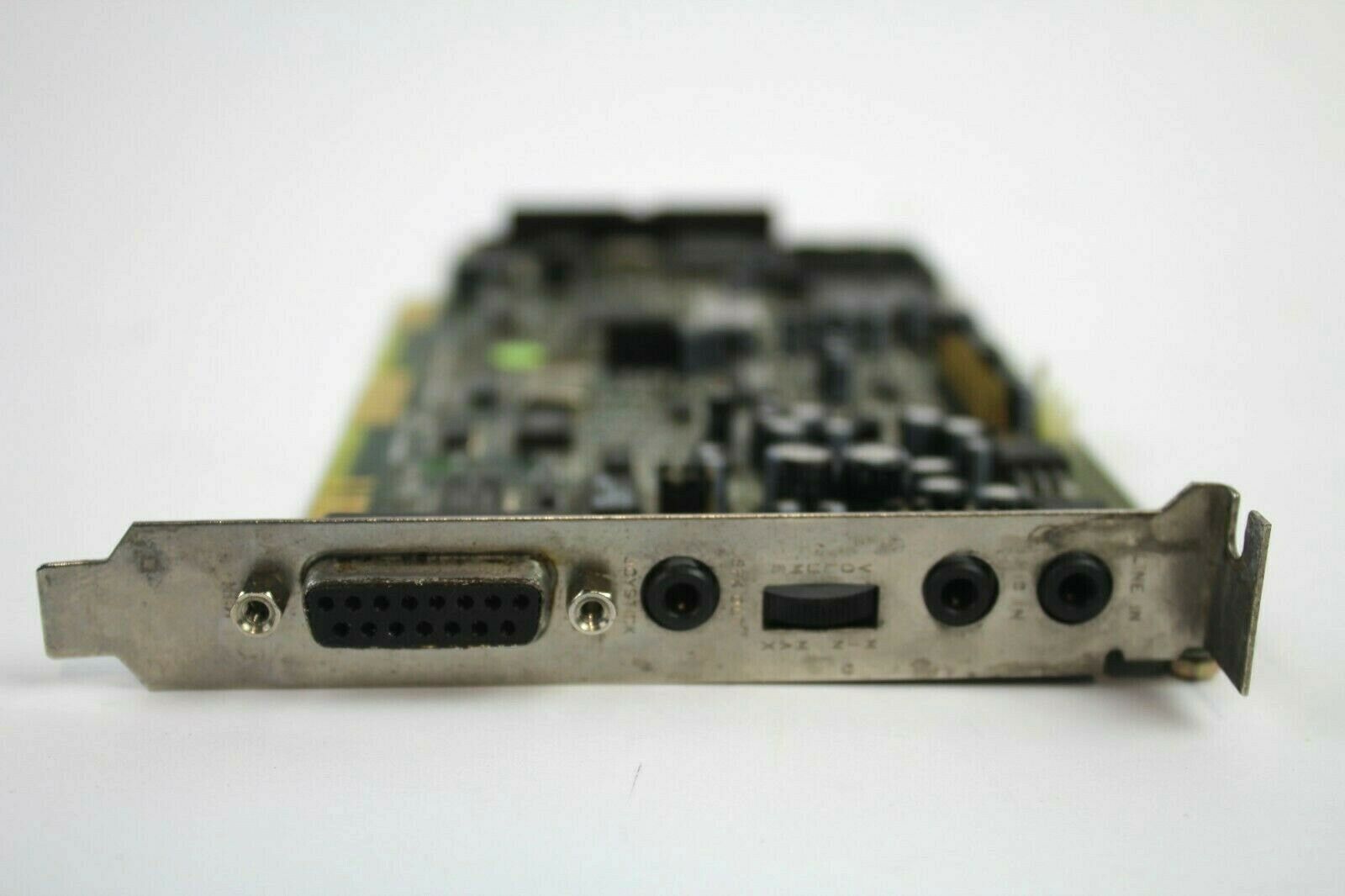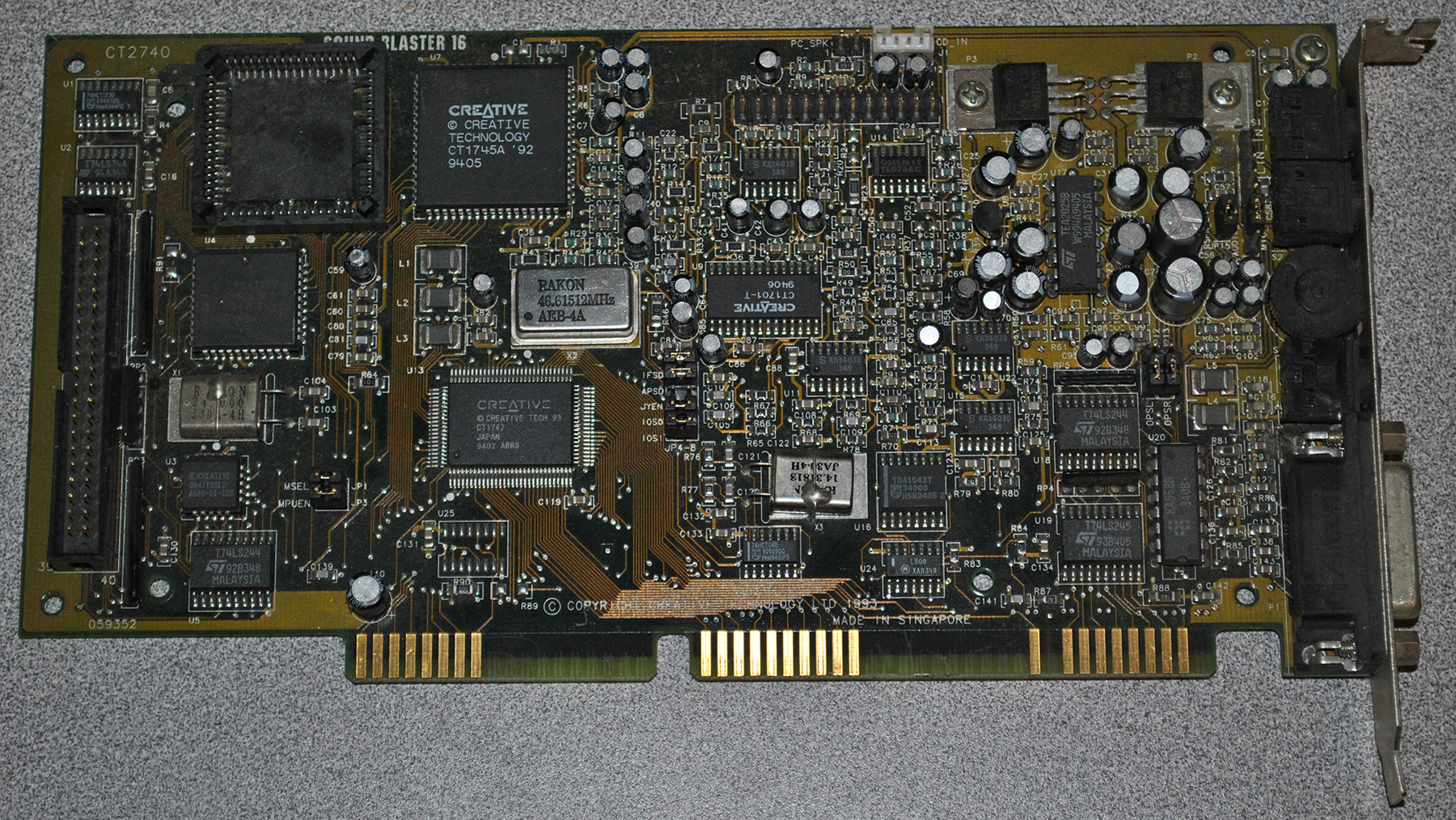Sound Blaster 16 (CT2740, CT2749)
Don't be fooled by the model number here - the CT2740 was a "Value Edition" card that pre-dated the earliest 2nd-gen Sound Blaster 16, the CT2230, and is much more like an updated CT1740 with the Yamaha YMF262 in the new CT1747 chip in place of an actual separate Yamaha FM chip. Note the CT1747 chip did not yet have the "OPL" licence logo on it - this is most likely because Creative had not received permission to put it on there from Yamaha at the time this board was made.
|
Released | 1993 |
| Bus | ISA 16-bit | |
| FM Synth | (Integrated Yamaha YMF262 in CT1747) | |
| Audio Codec | None | |
| Standards | Ad Lib, Sound Blaster, Sound Blaster Pro, Sound Blaster 16 | |
| Ports | Speaker-Out, Mic-In, Line-In Game/MIDI port |
|
| CD-ROM | Panasonic, IDE | |
| Wavetable | Wave Blaster header | |
| Plug & Play | No (Auto-Init only) | |
| FCC ID(s) | IBACT-SB16S | |
| Price | - | |
| See Also | Sound Blaster 16 (CT1770) Sound Blaster 16 MCD (CT1750) Sound Blaster 16 (CT1740) |
Some CT274x board revisions came with the CT1703-T DAC while others got the CT1701-T DAC. Read the Noise Issues section further up this page.
All board revisions lack a Line-Out on the backplate, instead getting the thumbwheel volume control that was on all the 1st-gen Sound Blaster 16 cards.
The CT2749 was identical to the CT2740 but was marketed without the CSP/ASP chip (though still supported this option via a socket).
Board Revisions
Known board revisions include 29349, 39350, 49351, and 59352.
All revisions came with the CT1745A mixer chip and CT1741 DSP chip with DSP version 4.11 (with the hanging note bug).
Competition
In 1993, Aztech Labs continued their assault on low-end Creative Labs' market with Sound Galaxy NX II, NX II Extra, and NX Pro Extra - the latter of which was their first Sound Blaster Pro-compatible.
Also arriving this year was ESS Technologies' ES488 chip which found its way onto a large number of budget OEM cards sold with PCs. It wasn't a competitor for the Sound Blaster 16 however, offering only Ad Lib and Sound Blaster 2.0 compatibility.
OPTi, a major chipset manufacturer, also released their 82C928 'MAD16' chipset which like the ESS chip, was implemented by lots of cheap Taiwan-based sound card manufacturers and sold in non-brand PCs. As the name suggests, this chip could record and playback in 16-bit.
MediaVision continued to compete directly with the Sound Blaster 16 with an extended range of their PAS16 card including the ProAudio Spectrum 16 Basic, Pro Audio Studio 16, ProAudio Studo 16 XL and Pro Movie Spectrum.
In the Media
Setting it Up
Downloads
Operation Manual Get in touch if you can provide this missing item! |
DOS and Windows 3.1 Utility Disks The original Sound Blaster 16 DOS and Windows 3.1 installation disks, marked Sound Blaster 16 |
. DOS and Windows 3.1 Utility Disks The original Sound Blaster 16/AWE DOS and Windows 3.1 installation disks, marked SDR-31STD-1-US (Revision 1). |
More Pictures
